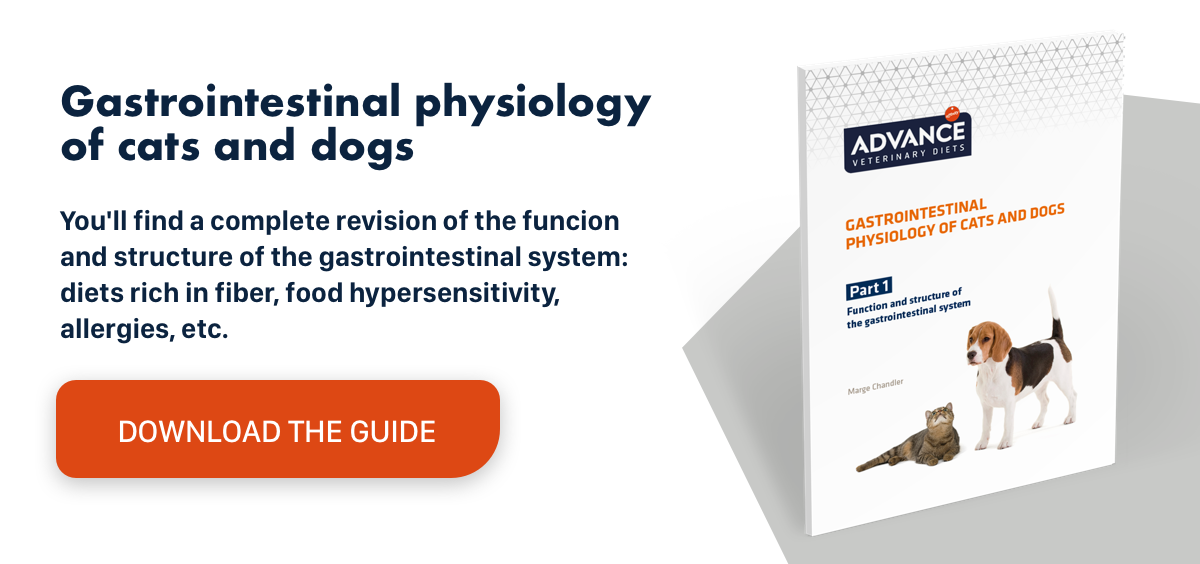Intestinal parasites in cats: prevalence and risk factors
From March 2012 to May 2013, 1,519 cats were included in a multicentre study conducted at nine veterinary schools across Europe (Austria, Belgium, France, Hungary, Italy, Romania and Spain). Each cat was assessed for ectoparasites by combing close to the skin, an otoscopic examination and microscopy on cerumen samples. Endoparasites were identified through standard stool tests performed on fresh faecal samples.
Intestinal parasites in domestic cats
Over half (50.7%) the domestic cat population was infected with at least one parasite, plus there was a high level of co-infections.
Regarding intestinal parasites or endoparasites: the macroscopic and microscopic study of stool samples revealed that 35.1% of cats were positive for endoparasites (gastrointestinal helminths, protozoa and lungworms). Gastrointestinal helminthiasis was found in 25.7% of cats, protozoal infections in 13.5% and respiratory nematodes in 5.5%.
Gastrointestinal nematodes were observed in 20.5% of the cats examined; Toxocara cati in 19.7%, A. tubaeforme/Uncinaria stenocephala in 1.4% and Toxascaris leonina in 0.3%. As for gastrointestinal protozoa, they were found in 13.5% of the cats: 9.7% and 3.2% of the samples were positive for Cystoisospora spp. and Giardia spp., respectively. A. abstrusus was identified in 4.1% of the 1,115 cats examined.
With respect to external intestinal parasites or ectoparasites: the overall infection rate of cats with ectoparasites was 29.6%. Ear mites were identified in 17.4% of the cats examined, followed by fleas (15.5%), ticks (1.2%), and other ectoparasites in 1.4% of cats.

Clinical picture
Depending on the parasite, intestinal infestations can cause problems ranging from mild gastrointestinal disorders, developmental failure, anaemia or anorexia to more serious cases, particularly in small cats with a high parasitic load. Some parasites carried by cats have a zoonotic potential, as is the case with some nematodes,
such as Toxocara cati and Ancylostoma tubaeforme, that are responsible for visceral and ocular diseases and cutaneous larva migrans, respectively. Among the protozoans, Toxoplasma gondii is of huge significance for public health. Ectoparasites can cause direct damage including pruritus and allergic reactions, while they may also act as potential vectors: fleas, for example, are involved in the transmission of zoonotic pathogens, especially Bartonella henselae, the causative agent of cat scratch disease.
Risk factors
- Toxocara cati: there were significant correlations with the following criteria: age (subjects over 24 months), outdoor access (frequent access), frequency of anthelmintic treatment (less frequent), number of cats in household (households with more than 3 cats) and examination centre.
- Aelurostrongylus abstrusus: there were significant correlations between outdoor access (going out more frequently) and location. There was no significant relation between age and pulmonary involvement.
- Otodectes cynotis: there were significant correlations between ear mite infestation and outdoor access, multi-pet households and location. Age did not present any significant differences.
- Ctenocephalides spp.: the study found significant correlations between flea infestation and location or outdoor access, with no significant relationship between flea infestation and age or multi-pet households.
The study concluded that intestinal parasites are not a rare event in European cat populations, the prevalence of polyparasitism being statistically significant, with a tendency for infestation by both endo- and ectoparasites due to common risk factors.
REFERENCE: BEUGNET, F., BOURDEAU, P., CHALVET-MONFRAY, K. ET AL. PARASITES VECTORS (2014) 7: 291. DOI:10.1186/1756-3305-7-291.
